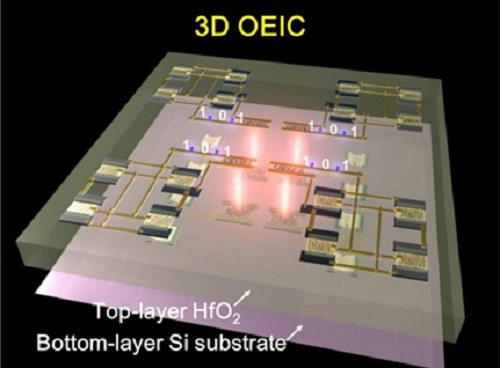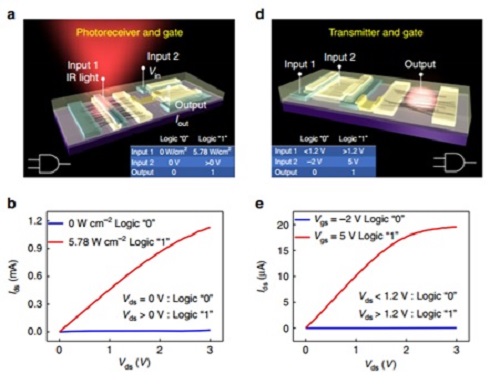Integrated circuits are an important part of a new generation of information technology industry. Over the past few decades, according to Moore's Law, the chip's capabilities have become more powerful and more integrated as the size of transistors has continued to shrink. However, with the closeness of the 10nm technology node, it is difficult to further increase due to physical laws and costs. In 2015, the International Technology Development Roadmap for Semiconductors (ITRS) Committee formally announced that Moore's Law will come to an end and that information technology will enter the post-Moore era. Academics and industry have been exploring ways to go beyond complementary CMOS architectures. On-chip optical interconnects and 3D integration architectures have become one of the research hotspots.
Carbon nanotubes have many advantages such as small size (1 ~ 3nm), high mobility, average free path length, wide spectral response, etc., and are expected to realize three-dimensional photoelectric integration on the chip. Therefore, they are considered to be ideal channel materials in the post-Moore era. Electronic and optoelectronic devices have been widely studied, but so far there has been no report on carbon interconnects and three-dimensional integration of carbon nanotubes.
School of Information Science and Technology, Peking University, Key Laboratory of Nanodevice Physics and Chemistry Ministry of Education Prof. Peng Lianxi's group developed a non-doping preparation method for high-performance carbon nanotube electron and optoelectronic devices in the field of carbon nanotube electronics, using symmetrical electrodes Preparation of high-performance carbon nanotube transistors using asymmetric electrodes to implement carbon nanotube photodiodes and light emitting diodes. At the same time, using the same process to prepare electronic and optoelectronic devices on the substrate, overcome the incompatibility of the incompatibility between the electronic and optoelectronic devices in the traditional materials. By introducing the “virtual electrode†photovoltaic multiplication effect, effectively improve the carbon nanotube photodiode. Open-circuit voltage output (9-stage cascaded carbon-tube photodiode open-circuit voltage output can be doubled to more than 2V), enabling electrostatic control of post-transistor devices.

Carbon tube three-dimensional photoelectric integration system
In addition, the research group used carbon nanotubes to efficiently control the carbon-encapsulated devices that are chiral-enriched and realized a carbon-tube light transmitter based on the “trion†light-emitting mechanism; the use of carbon-tube light receivers and carbon tube light transmitters to achieve the photoelectricity Hybrid integrated “AND†logic gates; further integration of photovoltaic-based carbon nanotube monolithic three-dimensional stacked optoelectronic integrated circuits, whose vertical integration scale is on the order of sub-30 nm; based on this, a channel-division-multiplexing (channel-division-multiplexing) approach is proposed. The interconnection structure of the CDM), the data in the top memory can be transmitted to the top-layer carbon tube light emitter by electrical signals, and then converted into the electrical signal by the light signal parallel to the bottom carbon tube light receiver. The subsequent processing by the underlying carbon tube circuit provides a valuable reference for exceeding the CMOS architecture.

Optical-electric hybrid integrated AND logic gate based on carbon light receiver and optical transmitter
The academic paper based on this work was titled "Carbon nanotube-based three-dimensional monolithic optoelectronic integrated system". It was published online on June 8, 2017 in Nature Communication. (Nature Communications, DOI: 10.1038/ncomms15649). Liu Yan, Ph.D., a doctoral candidate in the Institute of Advanced Interdisciplinary Studies, is the author of the paper and Peng Lianxi is the author of the communication.
The above research has been funded by the National Key R&D Program, the National Major Scientific Research Program, and the National Natural Science Foundation. Liu Huaping, a researcher at the Institute of Physics, Chinese Academy of Sciences, provided chiral enriched carbon nanotubes for related experiments.
Newstar Hardware Co.,Ltd is a professional manufacturer in tool cabinet, tool chest and full range of Tool Set per needed. Tool cabinet could be made with customized request with different size, color, logo or different material for top and handle for better use and selling. Tools inside drawers could also be combined per customer request, on plastic tray or EVA. Welcome to do business with us.
Tool Cabinet,Tool Chest,General Tool Chest,Black Tool Chest
SUZHOU NEWSTAR HARDWARE CO.,LTD. , https://www.hardwarenewstar.com